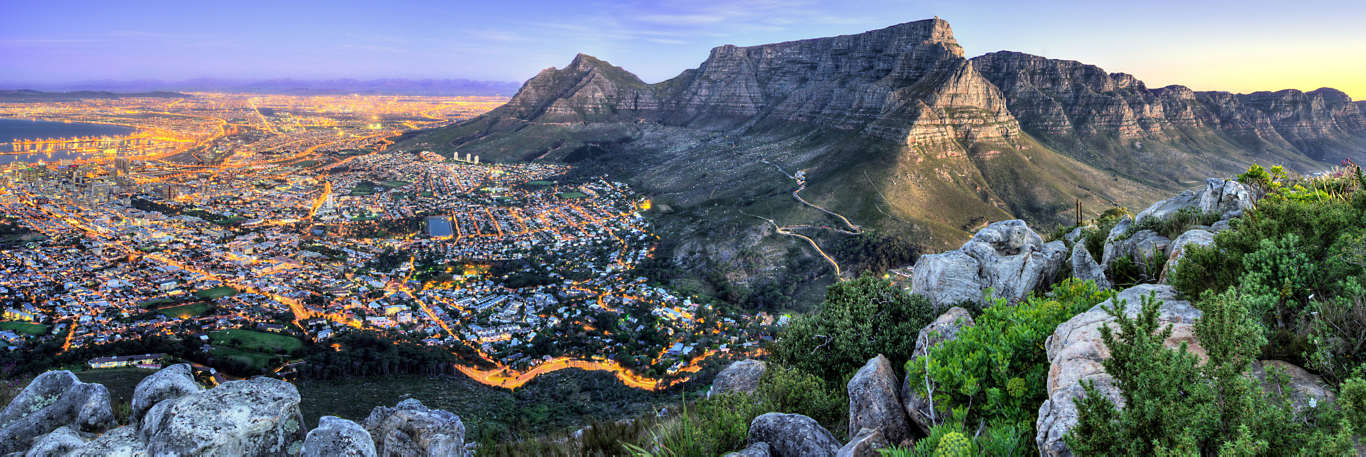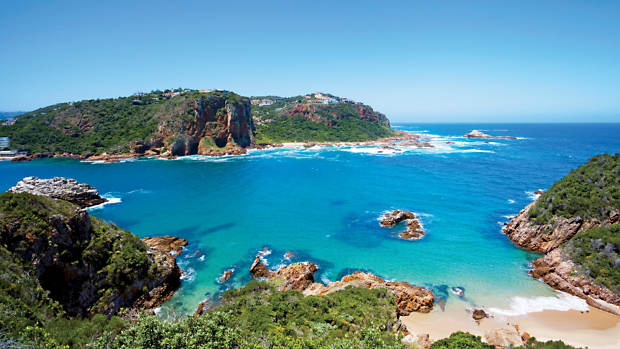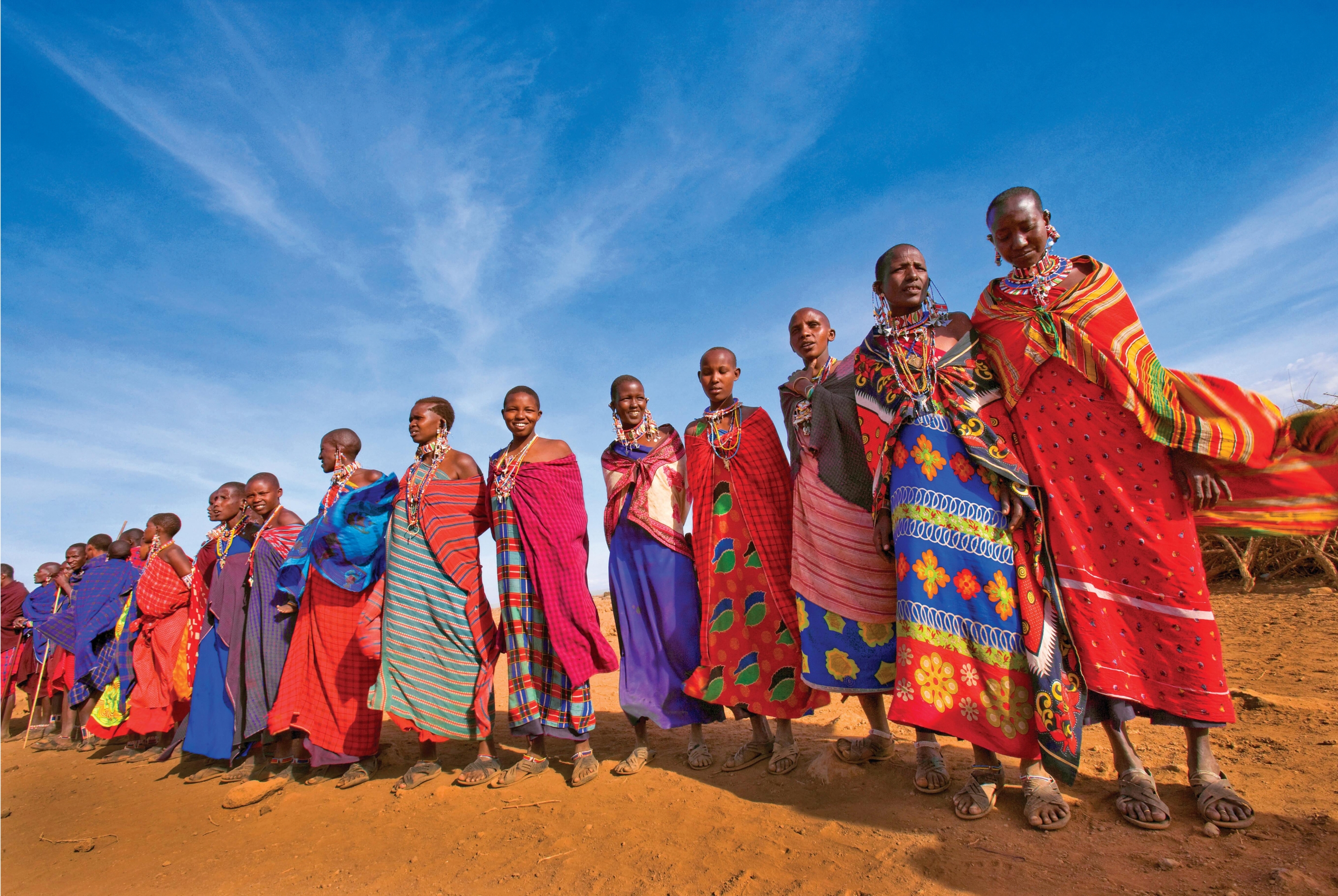You’re receiving this message because your web browser
is no longer supported
We recommend upgrading your browser—simply click the button below and follow the instructions that will appear. Updating will allow you to accept Terms and Conditions, make online payments, read our itineraries, and view Dates and Prices.
To get the best experience on our website, please consider using:
- Chrome
- Microsoft Edge
- Firefox
- Safari (for Mac or iPad Devices)

south africa
Set to the tune of trumpeting elephants, roaring lions, and the cawcaw of eager cormorants, South Africa brims with an untouched wildlife just waiting to be explored. This former colony at the southern tip of Africa boasts a staggering array of diverse ecosystems within its borders, from the charming coastline and verdant winelands to the desert sands of the Kalahara and the sweeping grasslands in between. Heed the call of the wild and venture out on safari: Some of the continent’s best game-viewing parks—Kruger, Dinokeng, and Addo Elephant National Park—are all here. Keep your binoculars at the ready as you traverse South Africa’s golden savannahs in search of the Big Five.
But South Africa’s diversity extends beyond its varied landscapes and bountiful wildlife. The country’s strategic position at the meeting of two oceans has tempted foreign powers since the 15th century, with Portuguese, British, and Dutch colonizers all leaving their mark; the effects of this tumultuous history have been seen and felt in the country’s cultural and political landscape ever since. In 1961, Africa finally threw off the mantle of colonialism and became an independent republic, but the white supremacist policies of the National Party forced the young nation into an ugly period of apartheid.
Over the next three decades, South Africa would experience rising inequality, riots, and increasingly violent terrorist attacks, until—with the eyes of the world watching— Nelson Mandela was finally freed from an unjust 27-year prison sentence and the National Party was forced to hold the country’s first democratic elections in 1994. Today, the “Rainbow Nation” is celebrated for its multicultural identity and unique hodgepodge of peoples and cultures. Come listen to the melodic counterpoint that rings so uniquely true in South Africa, where the comforting tones of a developed, westernized nation intermingle with the exotic harmonies of the open wilderness.
Compare Our Adventures
Click 'Select to Compare' to see a side-by-side comparison of up to adventures below—including
activity level, pricing, traveler excellence rating, trip highlights, and more

Spend 4 days in South Africa on
New! South Africa & Namibia: Cape Town’s Winelands to the Skeleton Coast
O.A.T. Adventure by Land
South Africa: Cape Town | Namibia: Windhoek, Sossusvlei, Swakopmund, Damaraland, Etosha National Park

Spend 9 days in South Africa on
New! Southern Africa Discovery: Victoria Falls, Kruger Safari & the Cape Peninsula
O.A.T. Adventure by Land
Zimbabwe: Victoria Falls | Zambia: Mosi-oa-Tunya National Park | South Africa: Kruger National Park, Stellenbosch, Cape Town
Compare Adventures
Add Adventure
including international airfare
per day
*You must reserve the main trip to participate on this extension.
**This information is not currently available for this trip. Please check back soon.
You may compare up to Adventures at a time.
Would you like to compare your current selected trips?
Yes, View Adventure ComparisonSouth Africa: Month-By-Month
There are pros and cons to visiting a destination during any time of the year. Find out what you can expect during your ideal travel time, from weather and climate, to holidays, festivals, and more.
South Africa in November-March
Unlike countries further north in Africa, South Africa does experience distinct seasons. Starting in November, temperatures rise toward 85 degrees Fahrenheit. In the eastern half of the country, summer is rainy season. While Kruger and Johannesburg see thunderstorms and higher humidity this time of year, the storms are also interspersed with brilliant sunshine. Lush greenery, fueled by the rain, makes wildlife harder to spot—although birdlife is at its most abundant.
In the western half of South Africa, summer is hot and dry. The summer months are an ideal time to visit Cape Town and enjoy a road trip along the coastal Garden Route. Throughout the country, hotels and parks are busy and crowded; it is best to plan well in advance for a summertime trip through South Africa.
Holidays & Events
- Mid January-mid February: The Maynardville Open Air Theater, a stunning park-like venue in Cape Town, presents a month of Shakespeare's works every summer.
- Late February: Cape Town Pride Festival
- February-March: Dance Umbrella is an annual festival in Johannesburg, showcasing new works by South African contemporary dance troupes.
- March-April: The Cape Town International Jazz Festival
Must See
After slavery came to an end in South Africa, freed slaves formed dance groups called minstrels—which are still going strong today. Every January 2—the one day a year that slaves were given as a holiday—the minstrel groups march through the streets of Cape Town. The groups perform music and dance for thousands of spectators in an event called Kaapse Klopse or Tweede Nuwe Jaar (Second New Year). After the January 2 celebrations come to a close, the minstrel groups spend the next six Saturdays competing in categories like "Best Dressed Team," "Best Band," and more.
Watch this film to discover more about South Africa
South Africa in April-May
Fall is an excellent time to explore South Africa, as temperatures are still warm (around 65 degrees Fahrenheit during the day), summer crowds have dissipated, and the dry season has begun in the east—making for excellent wildlife viewing in Kruger National Park. Nights can be chilly in the fall, with temperatures as low as 45 degrees Fahrenheit in May. Vibrant autumn foliage is an added bonus, especially in the wine-growing regions around Cape Town.
Holidays & Events
- Early April: The Klein Karoo National Arts Festival is South Africa's largest art festival and features over 1,000 artists performing or exhibiting over 200 works.
- May: The Good Food & Wine Show takes place in Cape Town every May, with an outpost in Durban in July and Johannesburg in September.
Must See
As the dry season begins in eastern South Africa, the lack of foliage provides excellent viewing conditions for wildlife. Autumn is the best time of year for safari drives in Kruger National Park.
Watch this film to discover more about South Africa
South Africa in June-August
Along South Africa's Western Cape and Cape Town, winters are rainy and cool with high temperatures in the 60 degree Fahrenheit range and lows near 45 degrees Fahrenheit. High elevations see occasional snow, but in most areas, windy rainstorms are the worst winter weather. Elsewhere, winters are sunny and dry with similar temperatures. In game reserves, animals gather around the few watering holes that remain this far into the dry season, making them easy to spot.
In July, migrating whales pass along the coastal Garden Route.
Holidays & Events
- June-July: The National Arts Festival
- Early July: The Knysna Oyster Festival is a South African celebration of the good life, with wine and oyster tastings and lots of fitness challenges.
- August: The Oppikoppi Bushveld Festival showcases South African alternative music.
Must See
With whales often coming close to shore along the cliffs of the Garden Route, South Africa is one of the world's best places for land-based whale-watching. The migratory season, from July to October, provides near-daily opportunities to spot southern right whales, humpbacks, and over a hundred other species of whale.
Watch this film to discover more about South Africa
South Africa in September-October
When springtime arrives, South Africa warms up with daytime temperatures reaching toward 75 degrees Fahrenheit. South Africa's normally-dry west coast blossoms in a kaleidoscope of color during the spring months. Flowers aren't the only new life springing into view this time of year—wildlife and livestock give birth across the country, making this an interesting (and adorable) time to visit a game reserve. It's also peak whale-watching season along the Garden Route. In eastern South Africa, spring marks the beginning of the rainy season.
Spring is a shoulder season in South Africa, meaning that popular attractions like the Winelands are less crowded.
Holidays & Events
- End of September: The Hermanus Whale Festival celebrates the migration of Southern Right Whales past the Garden Route town.
- September: Every spring, Johannesburg hosts the month-long Arts Alive festival in venues throughout the city.
- October: The town of Pretoria celebrates the blossoms of spring with its Jacaranda Festival, while the jacaranda trees that line the city streets are in full purple bloom.
Must See
Every spring, the Western Cape of South Africa is carpeted in wildflowers for a heady, six-week period from late August to early October. Even within Cape Town, the flanks of Table Mountain are obscured under a parti-color blanket—but further afield, travelers can view thousands of flowers in the town of Clanwilliam or the West Coast National Park
Watch this film to discover more about South Africa
Average Monthly Temperatures
High Temp Low Temp
South Africa Interactive Map
Click on map markers below to view information about top South Africa experiences
Click here to zoom in and out of this map
*Destinations shown on this map are approximations of exact locations
Kruger National Park
What started as the Sabie Game Reserve, originally founded in 1898 by Transvall President Paul Kruger in an effort to protect local wildlife, expanded in 1926 to become Kruger National Park as we know it today. South Africa's first national park, and one of Africa's largest game reserves, Kruger boasts over 500 avian species, some native only to South Africa. The Crocodile River draws many animals to its banks, from the “Big Five”—lion, elephant, leopard, Cape buffalo, and rhino—to zebra, giraffe, wildebeest, impala, kudu, and baboons. The park's towering acacia trees provide nourishment for giraffes and elephants, and its subtropical terrain even sustains a small population of endangered African Wild Dogs.
Explore Kruger National Park with O.A.T. on:
Cape Town & the Cape Peninsula
Originally a late-17th-century Dutch trading post, Cape Town is now South Africa's second largest city, and a hot spot for fine food, culture, scenic coastal beauty, and of course world-famous winelands. From the charming brick-paved streets, shops, and restaurants of Victoria & Alfred Waterfront, to the dramatic backdrop of Table Mountain—or the mesmerizing city views from its peak, and from aboard the cable car ride that takes you there—this area is filled with exciting locales, and stunning iconic natural landmarks.
Along the Cape Peninsula, the rocky coastline juts out into the Atlantic, providing dramatic views of Africa's southwestern tip. At the southern end of the peninsula, opposite Table Mountain, is the Cape of Good Hope, where the Atlantic and Indian oceans are said to meet. Along the eastern side of the peninsula known as False Bay, a series of inlets appropriately named Boulders Beach nurtures an impressively resilient colony of African Penguins, that from 1982 until today has grown from just two pairs of penguins to thousands.
Explore Cape town & the Cape Peninsula with O.A.T. on
The Garden Route

Spanning 300 kilometers of South African coastline, the Garden Route is a stretch of charming villages, sandy shorelines, rolling vineyards, and South African fynbos, a flowering shrub native only to the southern tip of Africa. Here, mountains tower over golden-sand beaches, and hiking trails lead from vast yellowwood pine and eucalyptus forests down to the picturesque shores of the Indian Ocean. The largest town along the Garden Route is Port Elizabeth, well-known for its relatively frequent whale sightings, and the remarkable Cape Recife Nature Reserve. Bird-watchers and nature-enthusiasts get swept away by the town's unspoiled beaches, walking trails, and rock pools that are so characteristic of the Garden Route.
Explore the Garden Route with O.A.T. on:
Johannesburg

The largest city in South Africa, Johannesburg is a bustling metropolis where progress and history intermingle daily. As the seat of the Constitutional Court, Jo'burg (as it is known locally) is where South Africa's new post-apartheid constitution is interpreted and applied. Clusters of towering buildings, some of the tallest structures on the entire continent, draw the eye upward toward the city's crystal clear skies. The city is also home to historic sites like the Old Fort Prison and the Apartheid Museum, and architectural feats like the Nelson Mandela Bridge, which connects Jo'burg's two largest business districts.
Explore Johannesburg with O.A.T. on:
Townships

Townships are former shantytowns where non-white racial groups were forced to live starting in the late 19th century. Generally located on the outskirts of major cities, they reveal a great deal about South Africa's history and efforts to rebuild after the end of Apartheid. Venturing outside Cape Town to the townships of Langa, Guguletu, and Bonteheuwel, or outside Johannesburg to Soweto, travelers can learn about the culture and daily life in these towns, which now contain vital, energetic, and thriving urban communities.
Explore townships with O.A.T. on:
Private Game Reserve

South Africa's vast expanses of open savannah are home to nearly 150 mammals and Africa's "Big Five," including the elusive leopard. With the Drakensberg Escarpment looming dramatically in the distance and the Matsuki River running through it, this rugged landscape is a nature-lover's paradise. And, because you'll be on a private reserve, safari vehicles are permitted off-road here, and you may even enjoy a game-viewing walk through the wilderness.
Explore a Private Game Reserve with O.A.T on:
- Pre Trip:South Africa's Entabeni Private Game Reserve on New! Southern Africa Discovery: Victoria Falls, Kruger Safari & the Cape Peninsula
Featured Reading
Immerse yourself in South Africa with this selection of articles, recipes, and more
Traveler Photos & Videos
View photos and videos submitted by fellow travelers from our South Africa adventures. Share your own travel photos »


